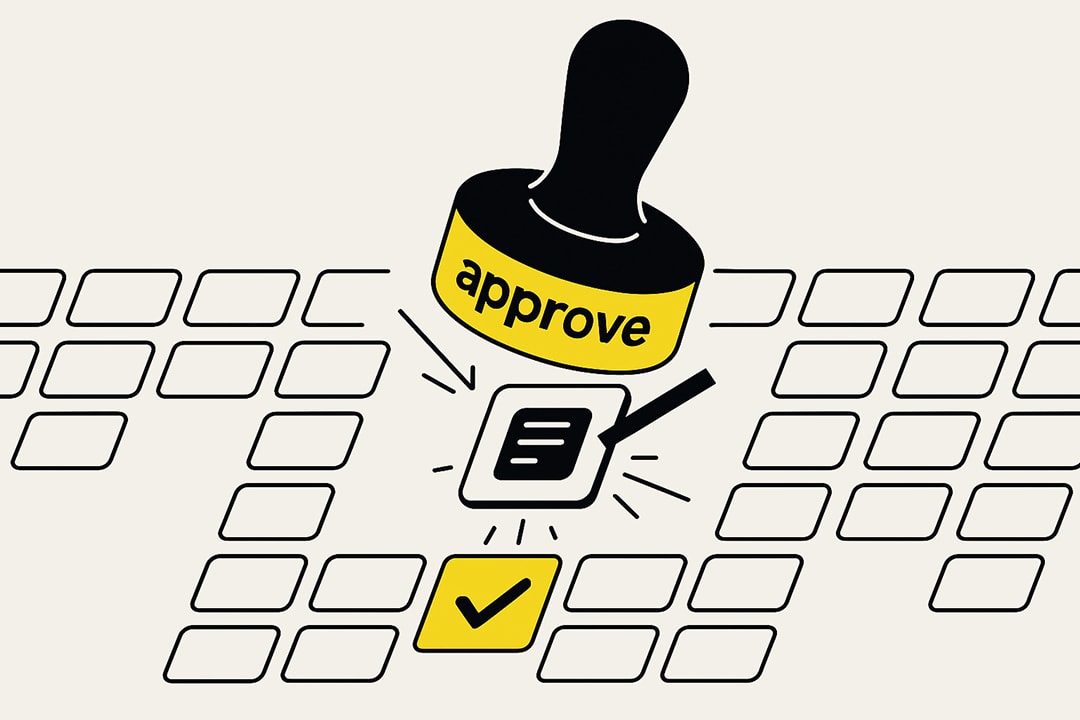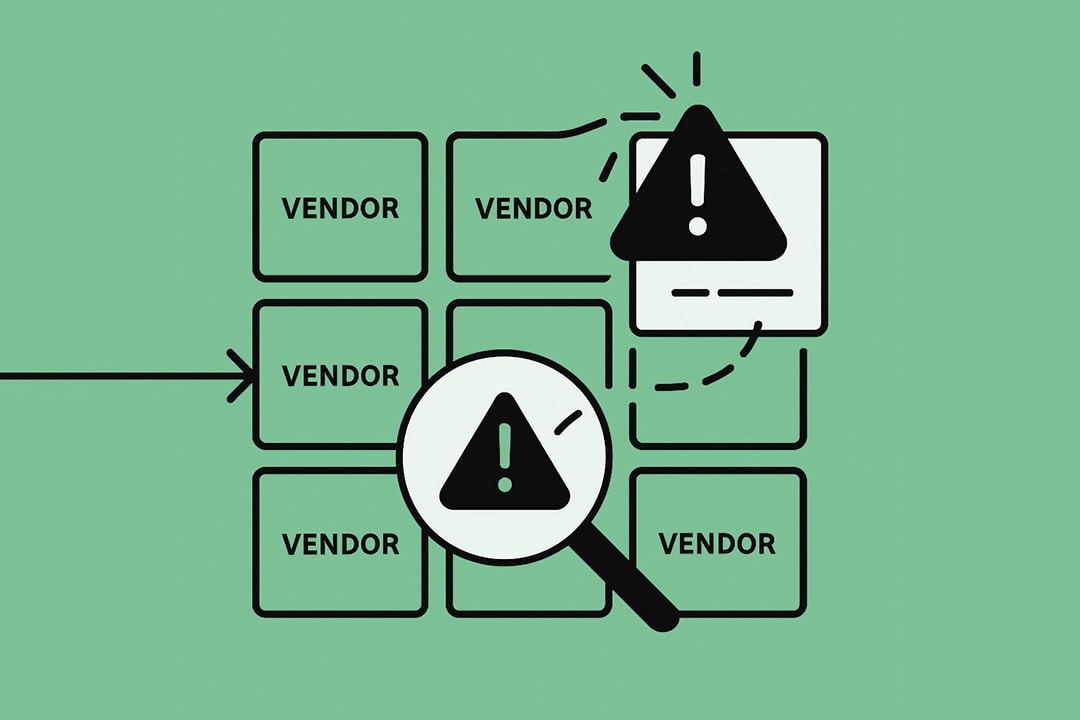Why your best leads aren’t converting
Why aren’t your best B2B tech leads converting? Traditional lead gen is dead—only trusted vendors get chosen. Learn how to win in today’s buyer-driven market.

TL;DR
- Traditional lead gen and cold outreach don’t work—buyers are actively tuning them out.
- Most buyers shortlist vendors before they ever see your pitch; if you’re not already trusted, you’re invisible.
- Proof and ROI stats mean little—90% of buyers trust peer reviews over vendor claims.
- Top vendors focus on building trust, showing up in real buyer conversations, and being present where decisions are made.
- Platforms like TechnologyMatch connect you with buyers who are already interested—adapt or keep losing your best leads.
Traditional lead gen is dead. Pretending otherwise is costing you deals.
Anyone working the B2B tech trenches for long enough knows the feeling: the CRM is loaded, the demos are tight, the pitch is battle-tested, and the pipeline, at least on paper, is robust. So why do those “best” leads vanish, often without so much as a polite decline? The answer isn’t in the next sales hack or the latest outreach tool. It’s in recognizing a buyer revolution most vendors still choose to deny.
Why most vendors are in denial about buyer power
Here’s the uncomfortable truth nobody wants to admit: buyers now have all the leverage, and most vendors are in denial. Forget about “relationship-building” calls and “thoughtful” follow-ups. Three out of four B2B buyers would rather never speak to a salesperson again.
This isn’t a gentle market trend; it’s an existential threat to the entire pitch-and-chase playbook. Buyers are running their own show, on their own terms, and treating vendor outreach like spam, no matter how much effort went into that beautifully crafted sequence.
This isn’t about “buyer fatigue.” It’s about buyers being sick and tired of being hunted. They’re hiding behind research, diving into peer forums, and ghosting anything that smells like sales desperation. Vendors who keep doubling down on outreach are basically shouting into a void.
If you’re not already in the room, you’re not even a contender
It’s time to face reality: buyers are not waiting for your next email. They’re not reading your whitepaper. They’re not responding to “just checking in” pings. When 98% of buyers want to self-serve, the vendor journey is almost completely invisible until the very last second.
The only invitations that matter come when the buyer has already made up most of their mind—70% of the decision is done before you even get a shot. The rest? You’re invisible. The “spray and pray” crowd is burning budget for sport, not results.
Stop forcing, start attracting: The curiosity framework
The game now is not about “getting in the door”, it’s about making buyers want to open it themselves. Force your way in, and you’re just more noise. Become the vendor that buyers seek out in stealth, and you flip the script entirely. Here’s the new, non-negotiable framework:
- Be findable, not forceful: If buyers can’t discover you on their terms, you don’t exist.
- Social proof is king: No one cares about your case study if your happy customers aren’t talking.
- Educate, don’t agitate: Give away the answers buyers are actually searching for. If you’re not helping, you’re hindering.
- Respect their timeline: Urgency is a lie. The vendor who waits for the buyer’s timing wins the deal, period.
If your pipeline is all volume, you’re doing it wrong
Stop measuring success by the weight of your pipeline. The only metric that matters now is: are you the vendor buyers are quietly shortlisting? Those who adapt to this reality get fewer, but vastly better, leads. They close more, retain more, and waste less. The rest? They keep chasing—and keep losing.
If you’re still playing the old game, it’s time to admit defeat. The buyer has already moved on. The only question is whether you will, too.
Lost in the shortlist
If your hottest leads vanish, it’s not a fluke. It’s your wake-up call. All those marathon pipeline meetings, the fine-tuned messaging, the “personalized” outreach—none of it matters if you’re invisible at the only moment that counts. Most vendors will never even get a real shot, because they’re eliminated before the race begins.
Being “on the list” doesn’t mean you’re in the game. It means you’re cannon fodder for a buyer’s ruthless process of elimination. Most of the time, when a buyer says “we’ll get back to you”, it means you’re being compared.
If you’re in the conversation, you’re already on thin ice
Forget about being “unique.” The minute you make it onto a buyer’s radar, you’re just another name in a spreadsheet, a tab next to a dozen others. Nearly 90% of B2B buyers start with a shortlist, and half of them will only ever take one or two vendors seriously. If you’re not already a familiar, trusted name, you’re disposable.
All that effort just to be a fleeting click, a 30-second scan, and a silent rejection. The worst part? Your team will spend weeks trying to “win” a deal that was lost before it started.
Stop blaming the pitch
The natural instinct is to tweak the messaging, overhaul the deck, or rethink the demo flow. But this isn’t about your pitch. It’s about buyer psychology and how the market actually works now.
The endless hustle and optimization might feel like progress. In reality, it’s a hamster wheel—just faster. The deeper pain isn’t missed revenue; it’s watching your team’s skill, energy, and pride get wasted by a system that treats them as background noise.
The buyer is drowning in vendor mush
Buyers are not evil, but they are exhausted. Their inbox is a graveyard of vendors promising “seamless digital transformation” and “next-level ROI.” If your pitch sounds like everyone else’s, it is everyone else’s. Same pitch, different brand. Buyers don’t pick “best.” They pick “safe.” They default to brands they already trust, ignore the rest, and use peer recommendations as their North Star. If you’re not already inside that circle, you don’t stand a chance.
Curiosity and trust are the only escape routes
The only way out of this death spiral is to stop trying to force your way in and start making buyers genuinely curious. Forget touchpoint volume and collateral blitzes. The vendors who get chosen today are the ones who earn their spot in the buyer’s mind before the shortlist is even made.
They show up in the right conversations, get vouched for by peers, and address the real fears buyers have, without ever sounding desperate or generic.
Here’s the uncomfortable but liberating news: if you feel invisible, don’t double down on noise. Change your rules. The market has spoken, and buyers have only let in those who make them feel safe, seen, and in control.
The rest are just spreadsheet filler. The next sections will get tactical about how to make this shift. If you’re serious about escaping vendor purgatory, now’s the time to prove it.
Trust, not proof, wins the deal
If you think another airtight demo, another ROI calculator, or another bullet-pointed case study will finally win the deal, you’re living in denial. Buyers are drowning in proof. They don’t want more data; they want someone they trust not to waste their time or put their reputation on the line.
Why buyers don’t care how “Right” you are
Sure, you can fine-tune your messaging and roll out a new deck every quarter. It won’t matter. The modern buyer has developed an allergy to vendor hype. After years of empty promises—everyone claiming to be “game-changing,” “revolutionary,” or “best-in-class”, they’re done listening.
Over 90% of B2B buyers now trust what their peers say more than anything you’ll ever put in a PDF. If you’re not being talked about where it matters, you’re invisible. Worse, you’re distrusted by default.
Especially in tech, where every vendor is armed with the same badges, the same “proven results,” and the same analyst reports, buyers just tune it all out. The reality is brutal: even if you’re the best, you’ll still get ghosted if you haven’t built trust where buyers actually hang out. When 98% of buyers want to self-serve, your “drip campaign” is just more white noise.
Vendor anxiety is real—and it’s not going away
Here’s the part nobody wants to say out loud: most vendors are terrified they’re not enough. All the sales dashboards, the “win/loss” reviews, the endless optimization—it’s all just window dressing for the real fear. The fear that “proving” value will never be enough, because the buyer’s not even listening. So teams double down—more facts, more stats, more “value props.”
The result? The harder you try to prove yourself, the faster buyers run the other way. Trust isn’t earned by shouting louder. It’s earned by being the vendor buyers would actually vouch for if their job depended on it.
How real trust gets built (Hint: It’s not in your funnel)
If you want to be chosen, stop thinking about your pipeline and start thinking about your reputation. Trust isn’t built by vendors, it’s built by buyers, for buyers. It’s born in private Slack channels, at peer dinners, and in communities where your logo is just a rumor until someone real vouches for you. If your happy customers aren’t telling your story, you don’t have a story.
Here’s the only framework that works now:
- Be present where buyers talk, not where you pitch: Enable real customers to advocate for you. If you’re not in the conversation, you’re out of the running.
- Answer the real questions buyers are afraid to ask: Get brutally honest about their anxieties. Don’t sell; solve.
- Trust takes time—deal with it: No, you can’t automate trust. No, you can’t “accelerate the cycle” with more emails. Trust is cumulative, and buyers can smell desperation.
- Cut through the noise: Smart vendors use platforms like TechnologyMatch to avoid the cattle call altogether. Here, buyers opt in because they’re actually interested. It’s proof that trust is the new currency—when a buyer chooses to meet you, you’re already halfway there.
If you’re still pushing data, you’re losing
The game has changed, and the scoreboard isn’t measuring proof anymore. It’s measuring trust, narrative, and the feeling buyers get when they see your name. If you’re still flooding the market with “evidence,” you’re losing to competitors who’ve figured out that credibility isn’t claimed—it’s conferred by the market.
Stop kidding yourself. If your pipeline is drying up, it’s not because you lack proof. It’s because you lack trust. Time to fix that, or get used to losing.
How trusted vendors get chosen
Buyers have already made up their minds before you walk in the door. 70% of their process is done in the dark, without your input, your content, or your team. They aren’t looking for new vendors to educate them. They’re looking to validate what they already suspect. And now, with nearly two-thirds of B2B buyers being digital natives, if you’re not authentic, fast, and relevant, you’re dead on arrival.
The uncomfortable truth? “Ready to pitch” is just table stakes. The real challenge is being present wherever the buyer’s trust is earned—peer networks, review sites, and unfiltered conversations that happen long before procurement ever picks up the phone.
Winners engineer their own luck
The vendors who keep winning aren’t lucky. They’re ruthless about showing up where buyers are making decisions, months before a “lead” ever hits the funnel.
Here’s their playbook:
- Curated visibility: Smart vendors don’t wait to be found. They invest in reviews, partnerships, and customer stories that get them mentioned in buyer conversations before the RFP ever goes out.
- Buyer-first positioning: Forget features and ROI chatter. Winners answer the hard questions, the ones buyers are really sweating over. They’re present in the dark social spaces, the communities, the off-the-radar chats where decisions are shaped.
- Radical respect for autonomy: They don’t chase. They don’t nag. They build frictionless ways for buyers to engage: when the buyer is ready, not when you’re desperate.
That’s why platforms like TechnologyMatch are the new kingmakers. They don’t just spam leads, they give you access only to buyers who have already decided you’re worth their time. It’s a system built for the way buyers actually behave now, not the way vendors wish they did.
Choose dignity over desperation
There’s a reason the best vendors walk into meetings with their heads high. They’re not begging for attention; they’re being sought out because they’ve put in the hard, patient work to build real trust and relevance.
If your team is still cold-calling and praying for a reply, it’s time to admit you’re lagging. Sure, the old way might fill the top of the funnel, but it also fills your week with wasted effort and eroded morale. Being chosen is the only exit from vendor purgatory.
The only move that matters
Here’s the bottom line: adapt or get left behind. The market is brutal, but it’s fair. Listen like your pipeline depends on it. Position with radical empathy. Build trust before you ever ask for a meeting. The vendors who do this will win bigger deals, close faster, and stop being background noise. The rest? They’ll keep wondering why their “best” leads never call back.
The choice is yours—cling to control and lose, or embrace what actually works and get chosen for what you’re truly worth.
FAQ
1. Why aren’t my qualified B2B tech leads converting into sales?
Most buyers ignore vendor outreach and shortlist trusted brands before you get a chance. If you’re not already known and trusted, your leads are unlikely to convert, no matter how strong your pitch.
2. Does traditional lead generation still work for B2B technology vendors?
Traditional lead gen tactics like cold calling, mass emails, and generic nurture campaigns are no longer effective. Modern buyers prefer to self-educate and engage only with vendors they trust.
3. What do B2B tech buyers value most when choosing a vendor?
Trust and peer validation are top priorities for buyers. Over 90% trust peer reviews more than vendor marketing materials or sales claims.
4. How can technology vendors build trust with modern buyers?
Vendors should invest in customer advocacy, be present in industry conversations, provide genuine value, and leverage platforms that connect them only with interested buyers.
5. What is TechnologyMatch and how does it help vendors increase conversions?
TechnologyMatch is a platform that matches vendors with buyers who have already expressed interest, eliminating cold outreach and making every engagement more relevant and likely to convert.





